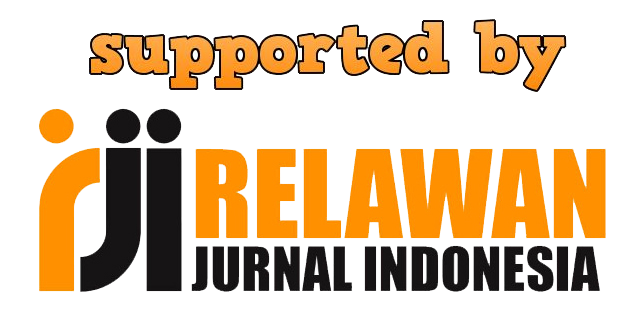Kemiskinan Kronis Berkelanjutan di Masyarakat Kawasan Hutan
DOI:
https://doi.org/10.23887/jish.v12i1.50290Keywords:
Masyarakat Kawasan Hutan, Kemiskinan Kronis, Rumah Tangga Miskin, Kemiskinan BerkelanjutanAbstract
Studi tentang kemiskinan kronis di kawasan hutan tidak begitu banyak dilakukan meski literatur terdahulu selalu mengaitkan antara konsep kemiskinan dan kawasan hutan. Dengan mengambil pendekatan kualitatif bergenre fenomenologi di Dusun Malangbong, Kabupaten Bojonegoro, Jawa Timur pada tahun 2021, artikel ini bertujuan untuk menjelaskan karakteristik rumah tangga miskin kronis di pedesaan kawasan sekitar hutan dan faktor-faktor yang menyebabkan keberlanjutan kemiskinan kronis tersebut. Hasil riset mengidentifikasi bahwa rumah tangga miskin kronis di kawasan hutan memiliki permasalahan ekonomi mulai dari mata pencaharian yang tidak menguntungkan, trend pendapatan yang selalu menurun, rendahnya kualitas hidup, dan buruknya kualitas kesehatan mereka. Mereka tetap miskin karena adanya faktor internal dan eksternal. Faktor internal yang menyebabkan kelanggengan miskin kronis adalah rendahnya kualitas pendidikan, terlalu bergantung pada kayu hutan dan rendahnya kreativitas dalam usaha, terbatasnya sumber daya air, dan pola pikir pengelolaan uang rumah tangga yang tidak efektif. Di sisi lain, faktor eksternal yang membentuk kemiskinan kronis adalah terisolirnya mereka dari pusat desa/kota, rusaknya infrastruktur jalan penghubung antar dusun/desa, dan keterbatasan sarana perekonomian di desa. Dengan mengetahui akar problem kemiskinan di masyarakat kawasan hutan, temuan artikel ini diharapkan bisa dimanfaatkan oleh pihak-pihak terkait untuk merumuskan strategi pengentasan kemiskinan yang dirasa tepat untuk jenis masyarakat ini.
References
Alase, A. (2017). The Interpretative Phenomenological Analysis (IPA): A guide to a good qualitative research approach. International Journal of Education and Literacy Studies, 5(2), 9. https://doi.org/10.7575/aiac.ijels.v.5n.2p.9
Alkire, S., & Foster, J. (2011). Counting and multidimensional poverty measurement. Journal of Public Economics, 95(7–8), 476–487. https://doi.org/10.1016/j.jpubeco.2010.11.006
Alkire, S., Roche, J. M., & Vaz, A. (2017). Changes over time in multidimensional poverty: Methodology and results for 34 countries. World Development, 94, 232–249. https://doi.org/10.1016/j.worlddev.2017.01.011
Azid, T., Aslam, M., & Chaudhary, M. O. (2001). Poverty, female labour force participation, and cottage industry: A case study of cloth embroidery in rural Multan. The Pakistan Development Review, 40(4), 1105–1118. https://www.jstor.org/stable/41260380
Bertrand, M., Mullainathan, S., & Shafir, E. (2004). A behavioral-economics view of poverty. American Economic Review, 94(2), 419–423. https://doi.org/10.1257/0002828041302019
Brady, D. (2019). Theories of the causes of poverty. Annual Review of Sociology, 45(1), 155–175. https://doi.org/10.1146/annurev-soc-073018-022550
Chowa, G. A. N., Masa, R. D., & Ansong, D. (2012). Determinants of saving among low-income individuals in rural Uganda: Evidence from assets Africa. Advances in Applied Sociology, 02(04), 280–291. https://doi.org/10.4236/aasoci.2012.24037
Christiaensen, L., & Martin, W. (2018). Agriculture, structural transformation and poverty reduction: Eight new insights. World Development, 109, 413–416. https://doi.org/10.1016/j.worlddev.2018.05.027
Dang, H.-A. H., & Dabalen, A. L. (2019). Is poverty in Africa mostly chronic or transient? Evidence from synthetic panel data. The Journal of Development Studies, 55(7), 1527–1547. https://doi.org/10.1080/00220388.2017.1417585
Datta, S. K. (2015). Rural poverty and female job participation: A case study of two districts in West Bengal. The Bangladesh Development Studies, 38(1), 55–76.
Decerf, B., & Ferrando, M. (2022). Unambiguous trends combining absolute and relative income poverty: New results and global application. The World Bank Economic Review, 36(3), 605–628. https://doi.org/10.1093/wber/lhab028
Duclos, J. Y., Araar, A., & Giles, J. (2010). Chronic and transient poverty: Measurement and estimation, with evidence from China. Journal of Development Economics, 91(2), 266–277. https://doi.org/10.1016/j.jdeveco.2009.09.002
Faletehan, A. F., Mauludin, M. F., & Hakim, A. K. (2022). Studi kualitatif tentang jebakan kemiskinan pada masyarakat pesisir di Pasuruan, Jawa Timur. Buletin Ilmiah Marina Sosial Ekonomi Kelautan Dan Perikanan, 8(1), 73–82. https://doi.org/10.15578/marina.v8i1.10960
Feldman, G. (2018). Saving from poverty: A critical review of Individual Development Accounts. Critical Social Policy, 38(2), 181–200. https://doi.org/10.1177/0261018317695451
Forouzani, M., & Karami, E. (2011). Agricultural water poverty index and sustainability. Agronomy for Sustainable Development, 31(2), 415–431. https://doi.org/10.1051/agro/2010026
Förster, M. F., & Pellizzari, M. (2000). Trends and driving factors in income distribution and poverty in the OECD Area. SSRN Electronic Journal, 42. https://doi.org/10.2139/ssrn.243521
Foster, J. E. (1998). What is poverty and who are the poor? Redefinition for the United States in the 1990’s - Absolute versus Relative Poverty. The American Economic Review, 88(2), 335–341.
Gao, Q., Xu, H., & Yuan, B. (2021). Environmental change and fishermen’s income: is there a poverty trap Evidence from China’s coastal areas. Environmental Science and Pollution Research, 28(43), 60676–60691. https://doi.org/10.1007/s11356-021-14254-1
Glavovic, B. C., & Boonzaier, S. (2007). Confronting coastal poverty: Building sustainable coastal livelihoods in South Africa. Ocean and Coastal Management, 50(1–2), 1–23. https://doi.org/10.1016/j.ocecoaman.2006.07.001
Hulme, D., Moore, K., & Shepherd, A. (2001). Chronic poverty: Meanings and analytical frameworks. SSRN Electronic Journal, July, 1–41. https://doi.org/10.2139/ssrn.1754546
Khan, I., Saqib, M., & Hafidi, H. (2021). Poverty and environmental nexus in rural Pakistan: a multidimensional approach. GeoJournal, 86(2), 663–677. https://doi.org/10.1007/s10708-019-10090-6
Khan, S. N. (2014). Qualitative research method - Phenomenology. Asian Social Science. https://doi.org/10.5539/ass.v10n21p298
Khullar, D., & Chokshi, D. A. (2018, October). Health, income, & poverty: Where we are & what could help. Health Affairs Health Policy Brief. https://doi.org/10.1377/hpb20180817.901935
Ladd, H. F. (2012). Education and poverty: Confronting the evidence. Journal of Policy Analysis and Management, 31(2), 203–227. https://doi.org/10.1002/pam.21615
Larkin, M., Shaw, R., & Flowers, P. (2019). Multiperspectival designs and processes in interpretative phenomenological analysis research. Qualitative Research in Psychology, 16(2), 182–198. https://doi.org/10.1080/14780887.2018.1540655
Lawson, E. T., Gordon, C., & Schluchter, W. (2012). The dynamics of poverty-environment linkages in the coastal zone of Ghana. Ocean and Coastal Management, 67, 30–38. https://doi.org/10.1016/j.ocecoaman.2012.05.023
Lázár, A. N., Adams, H., Neil Adger, W., & Nicholls, R. J. (2020). Modelling household well-being and poverty trajectories: An application to coastal Bangladesh. PLoS ONE, 15(9 September), 1–23. https://doi.org/10.1371/journal.pone.0238621
Leal Filho, W., Henrique Paulino Pires Eustachio, J., Dinis, M. A. P., Sharifi, A., Venkatesan, M., Donkor, F. K., Doni, F., Abubakar, I. R., Cichos, K., & Vargas-Hernández, J. (2022). Transient poverty in a sustainable development context. International Journal of Sustainable Development & World Ecology, 29(5), 415–428. https://doi.org/10.1080/13504509.2022.2029612
Liu, W., Zhao, M., & Xu, T. (2018). Water poverty in rural communities of arid areas in China. Water, 10(4), 505. https://doi.org/10.3390/w10040505
Masron, T. A., & Subramaniam, Y. (2019). Does poverty cause environmental degradation? Evidence from developing countries. Journal of Poverty, 23(1), 44–64. https://doi.org/10.1080/10875549.2018.1500969
Miller, R. M., Chan, C. D., & Farmer, L. B. (2018). Interpretative phenomenological analysis: A contemporary qualitative Approach. Counselor Education and Supervision, 57(4), 240–254. https://doi.org/10.1002/ceas.12114
Mishra, A. (2020). Poverty, forests and livelihoods: A study of three villages in Odisha, India. SSRN Electronic Journal, June. https://doi.org/10.2139/ssrn.3637545
Misturelli, F., & Heffernan, C. (2010). The concept of poverty: A synchronic perspective. Progress in Development Studies, 10(1), 35–58. https://doi.org/10.1177/146499340901000103
Montalvo, J. G., & Ravallion, M. (2010). The pattern of growth and poverty reduction in China. Journal of Comparative Economics, 38(1), 2–16. https://doi.org/10.1016/j.jce.2009.10.005
Nerfa, L., Rhemtulla, J. M., & Zerriffi, H. (2020). Forest dependence is more than forest income: Development of a new index of forest product collection and livelihood resources. World Development, 125, 1–13. https://doi.org/10.1016/j.worlddev.2019.104689
Pu, X. (2020). Literature review of relative poverty research. Voice of the Publisher, 06(03), 84–90. https://doi.org/10.4236/vp.2020.63008
Reeves, L. S., Parsell, C., & Liu, S. (2020). Towards a phenomenology of poverty: Defining poverty through the lived experiences of the ‘poor.’ Journal of Sociology, 56(3), 439–454. https://doi.org/10.1177/1440783319851204
Rejekingsih, T. W. (2009). Kemiskinan dan bagaimana memeranginya. AKSES: Jurnal Ekonomi Dan Bisnis, 4(7), 56–65.
Shepherd, G., Warner, K., & Hogarth, N. (2020). Forests and poverty: How has our understanding of the relationship been changed by experience? International Forestry Review, 22(1), 29–43. https://doi.org/10.1505/146554820829523907
Singh, P. K., & Chudasama, H. (2020). Evaluating poverty alleviation strategies in a developing country. PLOS ONE, 15(1), e0227176. https://doi.org/10.1371/journal.pone.0227176
Starks, H., & Trinidad, S. B. (2007). Choose your method: A comparison of phenomenology, discourse analysis, and grounded theory. Qualitative Health Research, 17(10), 1372–1380. https://doi.org/10.1177/1049732307307031
Sumodiningrat, G. (1998). Membangun Perekonomian Rakyat. Pustaka Pelajar dan IDEA.
Sunderlin, W. D., Dewi, S., Puntodewo, A., Müller, D., Angelsen, A., & Epprecht, M. (2008). Why forests are important for global poverty alleviation: A spatial explanation. Ecology and Society, 13(2), 1–21. https://doi.org/10.5751/ES-02590-130224
Suryahadi, A., & Sumarto, S. (2001). The chronic poor, the transient poor, and the vulnerable in Indonesia before and after the crisis.
Thorne, S. (2000). Data analysis in qualitative research. EBN Notebook, 3, 68–70.
Urcia, I. A. (2021). Comparisons of adaptations in grounded theory and phenomenology: Selecting the specific qualitative research methodology. International Journal of Qualitative Methods, 20, 1–14. https://doi.org/10.1177/16094069211045474
van der Berg, S., Burger, C., Burger, R., de Vos, M., du Rand, G., Gustafsson, M., Moses, E., Shepherd, D. L., Spaull, N., Taylor, S., van Broekhuizen, H., & von Fintel, D. (2011). Low quality education as a poverty trap. SSRN Electronic Journal. https://doi.org/10.2139/ssrn.2973766
Watson, D., Maître, B., Whelan, C. T., & Russell, H. (2017). Poverty, economic stress and quality of life: lessons from the Irish case. International Review of Economics : Journal of Civil Economy, 64(2), 125–143. https://doi.org/10.1007/s12232-016-0265-0
Downloads
Published
Issue
Section
License
Copyright (c) 2023 Aun Falestien Faletehan

This work is licensed under a Creative Commons Attribution-ShareAlike 4.0 International License.
Authors who publish with the Jurnal Ilmu Sosial dan Humaniora agree to the following terms:
- Authors retain copyright and grant the journal the right of first publication with the work simultaneously licensed under a Creative Commons Attribution License (CC BY-SA 4.0) that allows others to share the work with an acknowledgment of the work's authorship and initial publication in this journal.
- Authors are able to enter into separate, additional contractual arrangements for the non-exclusive distribution of the journal's published version of the work (e.g., post it to an institutional repository or publish it in a book), with an acknowledgment of its initial publication in this journal.
- Authors are permitted and encouraged to post their work online (e.g., in institutional repositories or on their website) prior to and during the submission process, as it can lead to productive exchanges, as well as earlier and greater citation of published work. (See The Effect of Open Access)


.png)
.png)













